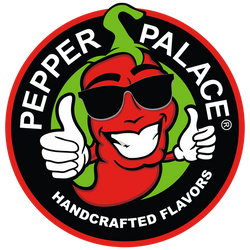Find a Store
Why Sauce Timing Is Everything
Trust us, sauce timing can mean the difference between mind-blowing flavor and dry, burned, or bland BBQ or wings. Whether you are grilling, smoking, baking, frying, or slow-cooking, the decision for when to add sauces to proteins isn’t one to be taken lightly. In fact, proper sauce technique can elevate your meat to a delicious level of sticky that’s super tasty and satisfying. It’s important to apply your sauce soon enough to impart flavor, but not so early that it burns or makes your fried foods soggy. Read on to learn why sauce timing is key to any preparation method.
Create a Crust: Caramelize, Don’t Carbonize
Brushing BBQ sauce over your protein provides rich, savory flavor, and it can also create a perfectly caramelized crust. That is, if you sauce at the correct time. When you heat BBQ sauce, the sugars break down and begin to cook. Done properly, it caramelizes and creates a glaze; done incorrectly, it forms a burnt mess. The perfect caramelization is a balance between timing and temperature.
Sugar burns between 260ºF to 275ºF, and leaves behind a bitter, sharp taste. If you’re using a fruit BBQ sauce, those natural sugars will burn at an even lower temperature. In order to create a scrumptious, caramelized coating and steer clear of the burnt bitterness, adjust your approach according to cooking style:
- Smoker – For a low-heat preparation that hovers around 275ºF, create a perfectly sticky protein by basting your meat with BBQ sauce starting about 30 minutes before it is finished—any longer than that could cause it to burn. If you’re using a fruit-based BBQ sauce, wait even longer, adding the sauce about 15–20 minutes before you’re done cooking.
- Grill – This high-heat preparation can cause sugars to burn quickly, so brush on the BBQ sauce just 10 minutes before the protein is done. It’ll give you that glossy, delicious bark without any burnt taste.
- Oven – Most oven cooking happens at around 375ºF, which is too hot for sugar. Wait until you’re done cooking, then remove the protein from the oven and smother it with your favorite BBQ sauce just before serving. If you still want to develop a delicious glaze, pop the sauced protein back in the oven for just a few minutes—three to five minutes is usually plenty—watching closely to make sure it doesn’t burn and ruin your meal.
Keep it Moist: Baste Your Brisket in Intervals
If you’re smoking a brisket or pork shoulder over low heat for a long time, you’re likely going to be using the basting or “mop” method to keep it moist. The key here is to time the mop intervals evenly to ensure even cooking and get the best results. First, create a mop, which is a vinegar-based sauce, by adding a generous amount of vinegar to your favorite BBQ sauce. You’ll only need a couple of tablespoons of BBQ sauce; the mop should be fairly thin. Adjust your intervals according to your total cooking time; if you’re grilling ribs for an hour, then mop them every 15–20 minutes, but if you’re smoking a pork shoulder for 15 hours, then mop every 3–4 hours.
A mop that’s applied with consistent, even timing offers a few advantages, including:
- The cool moisture lowers the smoker temperature and regulates cooking.
- The ingredients in the mop are helpful: The vinegar is a natural tenderizer, while the sugar helps form a crust, especially on brisket and other meats with a fat cap.
- Moisture attracts smoke so mopping your meat will help develop more smoked flavor.
Serve the finished product with the same BBQ sauce you used in your mop for consistent flavor when dipping, drenching, and smothering.
Fried Foods: Toss-And-Serve
For a crowd-pleasing fried meal, sauce timing means the difference between sticky, delicious finger foods and a soggy appetizer. When saucing fried chicken or cauliflower wings in a BBQ or hot wing sauce, wait until your protein is completely cooked through, then coat it immediately. Unlike the smoker preparation, you’ll have very little time between cooking and delivering before food starts to lose its crisp, so time is of the essence here. Our wing sauces are perfect helpers for a timely pour-toss-and-serve operation because they’re ready to go and they’ll give any level of heat from fiery to sweet chili.
Slow and Steady: Let the Sauce Do the Work
Because a slow cooker uses a slow-and-low method that doesn’t typically reach super-high temps, you can add BBQ sauce, wing sauce, or a flavorful salsa to your chicken or pork while it cooks to pack it with flavor without worrying about the sugars over-caramelizing. Once fully cooked, shred or cube the meat to your liking, and then top it with additional sauce for good measure. This “set-it-and-forget-it” preparation lets the sauce do all the work—the longer you leave it, the better your slow cooker meal turns out.
Sauce with Care
While proper sauce timing varies based on cooking style and temperature, when you’re successful, the end results are the same: perfect protein texture and big flavor. With these expert tips, you can avoid burnt BBQ or soggy wings and serve your guests caramelized, crispy deliciousness. Then, let the hush of everyone eating confirm that you are, in fact, a total sauce boss.
